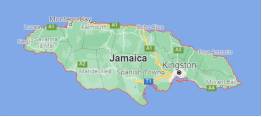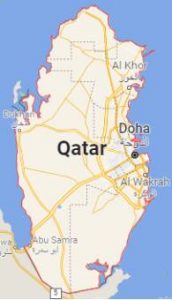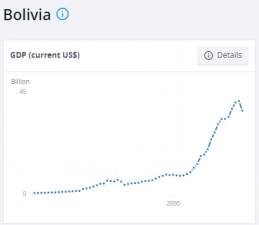According to Smithers, the total volume of all together indoor and outdoor signage applications increased from 10.80 to billion-meter square.
(Just guess; you can cover the entire Jamaica with that production!)
Now, it is going to be more than 11.71-billion-meter square.
(So, you cover the entire Qatar nation in the Gulf region! With those printed materials!)
The growth of volume of print application production from Jamaica to Qatar is astounding.
 |
 |
 |
Moreover, if we convert that volume to the value for those productions, we can say it is touching the $42.13 billion mark, which is almost the GDP of Bolivia today.
Fortunately, these all happened within a couple of years; say two to three years.
How can we ignore such fascinating growth?
Yes, we never can! So, we can say with confidence that the signage printing business/industry is trendy, and Corona endemic made it more belligerent.
Why?
I can cite many reasons behind it but let me give a real-life scenario so it can help you to imagine how badly we need the latest technologies even in the printing business to make it global from locals.
Mr. Phamol is running a drop shipping ecommerce portal in New Zealand. For the upcoming holiday season, the marketing team has decided to attract, engage, and generate seasonally inspired (impulse) purchases.
- Their marketing campaign involved a display of signage across the key areas.
- They were thinking of offering freedom to personalize fashion products on their ecommerce storefront.
- They also have plans to distribute printed leaflets, and brochures to spread their messages across the nation.
However, they had little time to prepare for everything, particularly large size signages.
One of the team members came up with a web2print idea to overcome delays in the busy local printing industry. Their search ended with some instant print service providers for signages in a neighboring country Australia.
Apart from the above-described facts, there’re many factors, which are setting different trends in the signage printing industry today. Let me discuss it all together concisely.
Increase in Applications of Digital Printing: Devices, Ink, Printheads, & Substrate
Device Trends:
The days have gone when we were relying on litho-print or screen-print options. Today we have digital devices to create print images. We have an inkjet, laser, and digital press (digital plus offset) printer options to delve into.
We have ample scope to apply different types of digital printing in different contexts, industries, and materials. For instance, On-demand, Variable Data, and Web-to-Print.
High growth trends are seemingly visible in the web2print market.
Moreover, the W2P market has obvious segments based on its major components, such as print media & ads, personalized products, and online applications.
Reports of CAGR estimated 6.6% of growth over a period 2020-27. It means the web-to-print industry will go from US$983.4 to US$1.5 billion according to Research Market.
By geography: U.S.; Japan, and China may acquire 6.2% CAGR growth while Canada and Germany may reach nearly 5.3-5.4% CAGR respectively.
Ink Trends:
The use of digital printing inks is depicting clear trends favoring UV-curable inks against aqueous, solvent, latex, and even dye sublimation. It is based on the photopolymerization process so ideal for outdoor signage on the PVC and Wood-like boards/materials.
Printheads Trends:
The market keeps a balance between the applications of Inkjet printheads and laser printheads depending upon their applicability and feasibility.
In Inkjet printheads, Piezo-electric printheads and thermal printheads are trendy against drop-on-demand and continuous inkjet. Native Resolution printheads have their own place in customization.
Substrate Trends:
Many natural and synthetic substrates are consumed in the signage printing market. However, the most trendy are foils, glass, textiles, release liner, paper, and ceramics depending on the requirements of the niche industry.
Increased Personalization Trends in Signage Printing Industry
Everyone loves personal approaches and experiences whether they buy something or consume content. Personalization is attention-grabbing and converting strategy for marketers.
However, one-on-one experience is possible in the modern digital printing industry using edge-cutting signage software. We have opportunities to offer a personalized experience in demographics, retargeting, locations, and various events.
In a survey, the following finds are worth mentioning here:
- 78% of consumers admitted that personalized content on printed signage boosts their purchase intent.
- 6% of customers agreed that the personalized brand messages increase their affinity and engagement with brands during branding campaigns through digital printing.
- 88% of marketers reported significant uplift in their campaigns when personalized printed signages were used.
Increased Tendency to the Internet of Things (IoT) Makes Signage Printing Business Smart & Safe
The use of IoT means connected devices and smart controls. Various sensors in IoT technology enable us to bring operational efficiencies without manual interventions for maintenance-like tasks.
You can make printing devices safe with IoT by increasing their safety and security against various threats. Smart sensors automatically detach your array of printers once they detect a threat.
Similarly, they can automatically put printing devices in deep sleep mode when they are not in use.
Moreover, M2M technology under the hood of IoT offers innovations in the signage printing business.
These all advantages lead the signage printing industry to set new trends in online design editors.
Minimalistic Design Trends in Signage Printing Business
Minimalism in design for signage printing keeps only essential elements. It means plenty of blank spaces, simple and concise content, and selective use of colors and styles.
These all save much printing inks and time at once for signage like large format printing niche. Less elements result in less errors. Less errors increase quality.
How attractive such things are from the perspective of a printing vendor, designer, and manager managing the printings!
3D Printing: Print-as-a-Service
3D printing is a new technology in online design editors for the signage industry. The Japanese market is ahead in the race of adoption than the USA.
Signage printing vendors used to create giant 3D models using 3D printers and do vacuum forming and cast molding of that prototype to give it a final touch.
When the signage industry will realize the potential of 3D printing, they will employ print-as-a-service providers instead of investing in their own 3D printers.
In this world, everything is not shining; some shadows are also present there. Let me illustrate one shadow here.
Increased Tendency to Adopt Digital Signage Against Traditional Print Signage
Digital signage is an electronically controlled display system. It let you display advertisements on a kind of large (outdoor) to small (indoor) screen/monitor in dynamic ways.
By nature, it is permanent signage and it has its own pros and cons, such as its feasibility within limited areas and for a handful of purposes.
However, increased adoption of digital signages poses serious challenges to the traditional print industry, enhanced digital print technologies, green materials, and automation scopes through software are some factors helping the signage print businesses around the world.
Increased penetration of software solutions in the printing signage industry across the globe is enough to combat such threats by providing viable web-to-print solutions.
